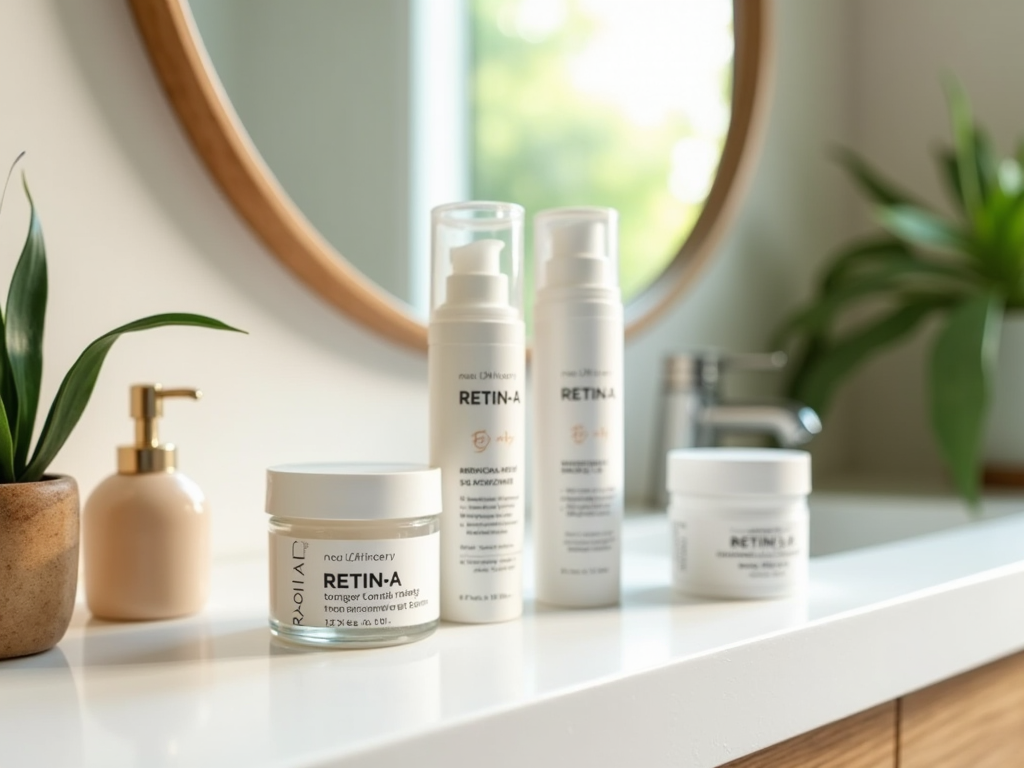In the diverse world of skincare, understanding the multitude of ingredients can often feel overwhelming. Among the most debated and misunderstood are retinoids, a family of compounds known for their transformative effects on skin texture and appearance. From tackling fine lines to improving uneven skin tone, these ingredients have made a significant impact in the cosmetic industry. However, not all retinoids are created equal. Distinguishing between retinol, Retin-A, and other retinoids can be crucial for achieving your skincare goals and navigating the complexities of effective routines. Let’s delve into what sets these products apart and help demystify their roles in your skincare journey.
What Are Retinoids?

Retinoids are a class of compounds derived from vitamin A, known to promote cell turnover and stimulate collagen production. They are often heralded as a cornerstone in anti-aging skincare because of their ability to address various skin concerns. Retinoids can be categorized into two primary groups: prescription-strength and over-the-counter products. Prescription retinoids like tretinoin (commonly known as Retin-A) are typically stronger and more effective than their over-the-counter counterparts. However, even milder options can yield significant benefits when used consistently. Understanding how retinoids work is critical to choosing the right type for your specific needs.
What Is Retinol?

Retinol is perhaps the most well-known over-the-counter retinoid. As a milder form of retinoid, it’s favored among those new to these potent ingredients. The skin converts retinol into retinoic acid, which is the active form that produces the visible benefits associated with retinoids. Suitable for most skin types, retinol can improve texture, reduce the appearance of fine lines, and even help with acne management. One of the primary advantages of retinol is its accessibility; it doesn’t require a prescription and is available in various formulations, from serums to creams. For many users, retinol offers an ideal entry point into the world of retinoids without overwhelming the skin.
What Is Retin-A?
Retin-A, or tretinoin, is one of the most potent and effective prescription retinoids available. Its higher concentration of active ingredients allows for quicker and more pronounced results. Frequently prescribed for acne, Retin-A helps to unclog pores and prevent future breakouts while simultaneously smoothing the skin’s surface. Unlike retinol, which requires conversion to active form, Retin-A works directly upon application. This means users often see faster results, making it a go-to choice for more severe skin concerns. However, the potency of Retin-A can also come with increased side effects, making it more crucial to use under a dermatologist’s supervision.
Key Differences Between Retinol, Retin-A, and Retinoids
The distinctions between retinoids, retinol, and Retin-A significantly shape user experiences and outcomes. Understanding these differences helps individuals choose the right product tailored to their skin type and concerns. Here’s a quick overview of each, focusing on potency and effectiveness:
| Product Type | Potency | Availability | Common Uses |
|---|---|---|---|
| Retinoids | Varies (dependent on the specific ingredient) | Prescription and OTC | Anti-aging, Acne, Skin texture improvement |
| Retinol | Mild to Moderate | Over-the-counter | General skincare, Mild acne, Fine lines |
| Retin-A (Tretinoin) | High | Prescription only | Severe acne, Deep wrinkles |
While retinoids offer a myriad of benefits, they also come with potential side effects. Common benefits include:
- Improved skin texture and tone
- Reduced visibility of fine lines and wrinkles
- Decreased appearance of acne and enlarged pores
- Enhanced collagen production
On the flip side, users may encounter side effects such as:
- Dryness or peeling, particularly in the initial weeks of use
- Increased sensitivity to sunlight
- Redness or irritation
To minimize adverse effects, it’s advisable to start with lower concentrations and gradually increase usage. Patch testing before full application can also help gauge how the skin reacts. Consistency and patience are pivotal when it comes to seeing results from retinoid products.
Choosing the Right Product for You
Choosing the best retinoid for your skin involves considering several factors. First, it’s important to assess your skin type. For sensitive or reactive skin, starting with retinol might be the best approach to avoid irritation. Additionally, consider your specific skin concerns and what you hope to achieve. Do you want to combat aging, treat acne, or simply enhance skin texture? Knowing your primary objective will inform your decision. Lastly, consulting with a skincare professional can provide personalized recommendations tailored to your unique needs and dosage preferences.
Conclusion
Understanding the key differences between retinol, Retin-A, and retinoids can empower you to make informed decisions about your skincare routine. Retinol offers a gentle introduction to the world of retinoids, while Retin-A provides powerful benefits for those who need a more robust solution. Overall, knowing your skin type, concerns, and goals will guide you toward the most appropriate choice. Remember to consider consulting with a dermatologist for tailored advice to optimize your skincare experience and results.
Frequently Asked Questions
- What is the main difference between retinol and Retin-A? Retinol is an over-the-counter option that is less potent than Retin-A, which is available by prescription and provides stronger results.
- Can retinol cause irritation? Yes, retinol can cause mild irritation, redness, and peeling, especially when first introduced. It’s crucial to start slowly and follow usage guidelines.
- How long does it take to see results from Retin-A? Many users begin to see improvements within 4-6 weeks of consistent application, while optimal results may take several months.
- Is it safe to use retinoids during pregnancy? It is generally advised to avoid retinoids during pregnancy due to potential risks to the fetus.
- Can I use retinol with other active ingredients? Yes, but it’s essential to be cautious; combining with ingredients like alpha hydroxy acids (AHAs) can increase skin sensitivity. Always consult with a skincare professional.



